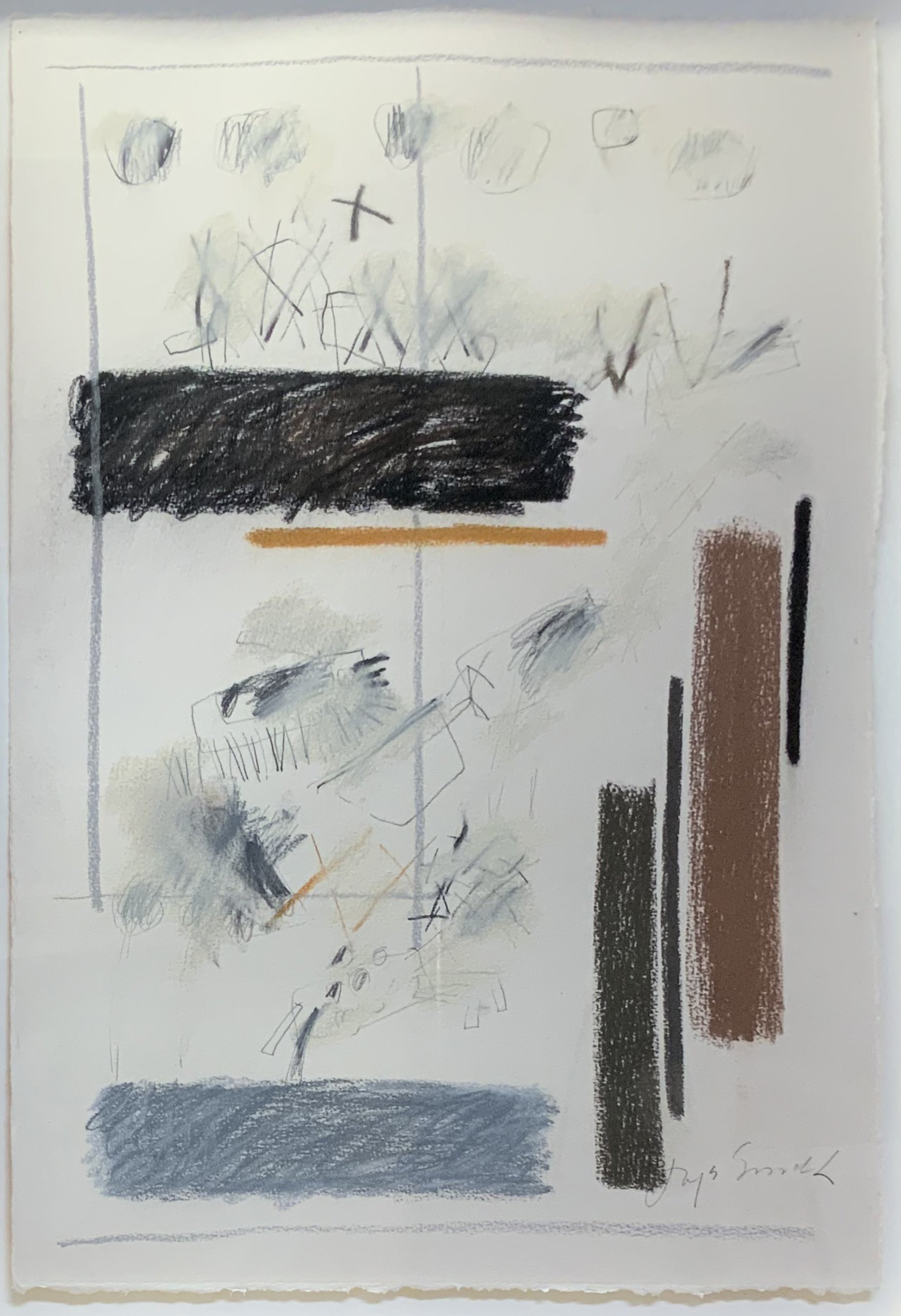JAUNE QUICK-TO-SEE SMITH, Untitled, 1970s, pastel on wove paper, 28.5 x 21 in. Bequest of Bill Bomar known as the Jewel Nail Bomar and William P. Bomar Jr. Collection. 1993.089
Artist and activist, Jaune Quick-to-See Smith was born in 1940 on the Flathead Reservation in Montana; a citizen of the Confederated Salish and Kootenai tribes. Her first name, Jaune, means "yellow" in French, pointing to her French-Cree ancestry. Her Indian name, "Quick-to-See," was given to her by her Shoshone grandmother as a sign of an ability to grasp things readily.
Unfortunately, the “powers that be” have not always been as quick to recognize her creative talent and contributions to art and advocacy. In 1976, having earned a bachelor's degree in Art Education, Smith moved to Albuquerque, NM to start graduate school at the University of New Mexico (UNM). She applied three times and was successively turned down each time. After an eventual exhibition at the Kornblee Gallery in New York City and its review in Art in America, she was finally accepted into the graduate program at UNM where in 1980 she graduated with a Masters in Art. Formal studies of classical and contemporary arts, focusing on European and American artistic practices, served as her most influential point of access to the contemporary global art world.
As a student, Smith worked primarily in pastels, described as drawings of enigmatic maps with floating pictographs and tracks of places that were meaningful to her—seemingly a response to professors who emphasized abstraction. Though originally undated, Smith’s drawing in the OJAC collection appears to reflect this period of her work, with its rectangles of subdued colors and quickly drawn then partially erased symbols. Today, Smith’s works are often large-scale, multi-media, and multi-layered. She combines traditional tribal motifs and contemporary symbols to bridge gaps between Indigenous and non-Indigenous cultures and to educate about social, political, and environmental issues existing deeper than the surface.
Over the last five decades, Jaune Quick-to-See Smith has been included in nearly 100 exhibitions, and in 2020 a painting of hers was the first by a Native American to join the collection of the National Gallery of Art in Washington, DC. Over the summer, the 83-year-old Smith was the subject of a retrospective at the Whitney Museum of American Art in New York City—the museum's first retrospective ever of an Indigenous artist. The exhibition, titled Jaune Quick-to-See Smith: Memory Map will travel to The Modern Art Museum of Fort Worth this fall, and will remain on view October 15, 2023 - January 21, 2024.
Amy Kelly
Collections Manager and Associate Curator


